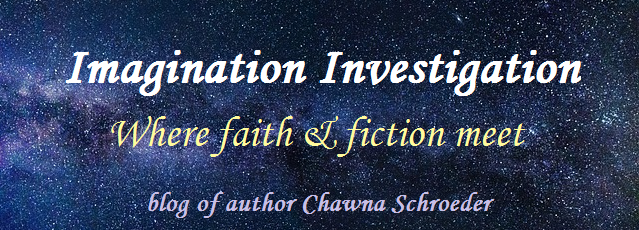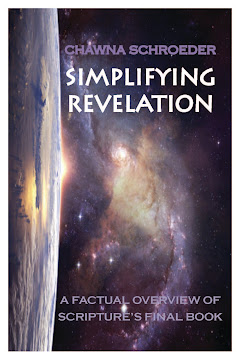I had originally planned to take this week off from blogging, since we in the United States are celebrating Thanksgiving. But yesterday I read a blog which caught my attention and to which I wanted to respond in length.
In this blog, the writer alleged that allegory is pointless, that in our society it “does NOT ‘reach more.’ It ‘confuses more.’” (To read the whole post—which I highly recommend—click here.)
This especially concerned me, since I write in a genre heavily dependent on allegory and symbolism. So is the writer right?
The Objections
In this blog, the writer makes three main points:
1. Blind eyes have trouble discerning, and therefore will find allegory confusing.
2. Jesus explained his parables.
3. Christ’s parables were not an example for his/her own writing.
Yes, blind eyes have trouble discerning, but is that all bad? Does someone have to understand the whole to benefit from it? And if they see only in part, maybe they will be tantalized to learn of and understand the whole. Besides, cannot God open the eyes of the blind? Might he not use the allegory or symbolism in your writing to provide them the key to understand John 3:16? Finally, if the eyes are truly blind—and the story is well-written—they will completely miss the allegory. How can you be confused by what you never see? And at worst, when they finish the story, there will be a gut feeling that they missed something—which will spur them to go back and read your book again. How can that be a bad thing?
And yes, Jesus explained some of his parables. There are many parables that are left unexplained in Scripture, even if he explained them all to his disciples. After all, that is part of the work of the Holy Spirit (John 16:13, I Corinthians 2:6-16). And if the Holy Spirit will reveal all truth, does that not include the nuggets buried in fiction? For no story, realistic or fantastical or allegorical, will ring true without truth.
Finally, yes, this is probably not the model for this writer. But does that mean it is not to be a model for others? Rather, I think there should be a balance. No, not every book should have layer after layer of symbolism, but neither should every book lack any symbolism. Different kinds of books attract different readers, and if you exclude books with the deep tapestries of symbolism or allegory, certain kinds of readers—both Christian and non-Christian—will be alienated.
The Place of Allegory
So what are the advantages of writing with allegory? Three come to mind:
First, allegory stretches and enriches those who do get it, and unless you’re writing something very strange and obscure, some will understand.
Second, symbolism can deepen the tapestry of the writing, even if the readers don’t get it all. Readers absorb much subconsciously, and it is amazing how smart people can be, if given the chance. How often do readers fail to rise to the great heights of imagination and literacy because we writers do not dare them to at least try? I am not a Harry Potter fan, but those books proved that kids can read very long books—if given a reason to. That was once believed impossible by the majority of teachers, children’s writers, and publishers (or so it seemed at the time).
Third, allegory/symbolism sneaks truth in the back door. The other writer complains that readers are blind and won’t get it. That’s actually part of the point. Allegorical writers don’t want everyone to get it—at least not immediately. Rather, they want the story to lodge in the heart and break out later unexpectedly when the connections are made, whether through personal experience, someone explaining the book, or a connection made with another story/sermon/song.
Writers of Allegory
This naturally leads to the question Brandilyn Collins raised in that same blog: who should write allegory/with symbolism? Not everyone, as I pointed out earlier. Rather, I would consider these questions first:
What’s your genre? Symbolism is much more likely to be missed in certain genres where it’s not commonly found, such as in romances or thrillers. But in other genres, like fantasy or literary work, symbolism is not only commonly found, but it is also expected by the readers. In those cases, if you don’t put it in, the readers will put it in for you.
What’s your target market? Some groups of readers, such as seekers or baby Christians need things explained clearly. But mature Christians steeped in Scripture are more likely to spot Biblical allusions and will relish the deeper parallels to real life.
Do you care if only a few “get” it? Because some will get it and some won’t. If it bothers you that not everyone will see your brilliant parallels, skip the allegory; you’ll only be disappointed. But if you don’t care, go ahead. It’ll likely deepen your work, and some will appreciate the extra lengths you’ve gone through.
Allegory Standards
Finally, this brings us to how allegory should be written. First, don’t overload it. The main story should be able to stand on its own, even if no one ever figures out the symbolism. If the story can stand on its own, then you don’t have to worry about people being confused by the allegory, because they’ll glance over it in their enjoyment of the main story. But if the allegory becomes so heavy it bogs down the story—then you have a major problem.
Second, provide a key. Christ did not explain every parable, but often provided a hint: “The kingdom of heaven is like…” He gives us the starting point, but leaves us to draw the parallels.
Lastly, as I alluded to in the first standard, you must write a great story, one you can enjoy over and over again, even if you fail to get the allegorical story. That’s why C.S. Lewis’s Chronicles of Narnia work so well. A child can read them and enjoy the story. A teen can read them again and glimpse some of the parallels. A parent discovers that whole second story, and a grandparent gets even more out of them. In fact, you often reread allegories for the purpose of understanding that allegory better. But the story must be good enough to reread and to lodge in the heart so that when the key is provided, the story is still there to be unlocked.
In short, allegory should be like connect-the-dots within a picture. To the uninitiated, the dots are only a part of the overall picture. To the untrained, provide the key and they’ll figure it out. To the trained, they can look and see the connect-the-dots picture, without even needing to draw the lines. And sometimes even the trained will overlook the dots at first because the main picture is so detailed. But when life happens, the reader will see the parallels, thoughts will click, and the dots will connect.
And isn’t that our goal with our readers—whether or not our writing is allegorical?
Tuesday, November 20, 2007
Subscribe to:
Post Comments (Atom)




1 comment:
Happy late Thansgiving!
Post a Comment